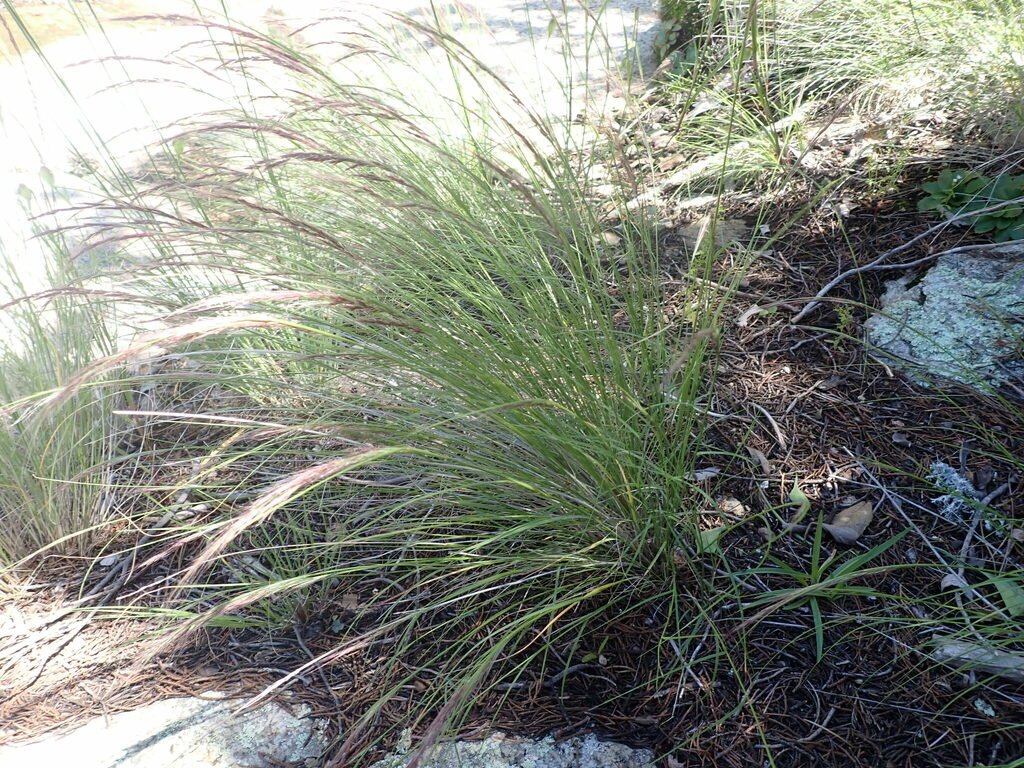Few-flowered Muhly
Muhlenbergia pauciflora
Family: Poaceae
Tightly tufted perennial grass, rarely rhizomatous to about 2’ tall. Plants bloom June through November.
M. pauciflora is a tufted perennial, and is relatively small compared to other tufted Muhlenbergias. It often grows on rock or rock ledges and is sometimes rhizomatous. This species has contracted panicles.
Part sun best, moderate water.
Native grasses are extremely important plants for wildlife: as nesting material for birds as well as native bees and other insects, as habitat for many organisms, and as food: adult insects eat the foliage, granivorous birds depend on many species for seeds, and most grass species are used as larval hosts for many species of butterflies and moths, especially skippers. Many bee species collect the pollen of many species of grasses. Desert tortoises can eat the foliage, and since this is a larger species, they like to hang out under the foliage for shade.
Photo by Ethan, iNaturalist
Muhlenbergia pauciflora on SEINET
Grasses also play an important role in the ecology of soil, and because they are monocots, they can be planted close to other species of plants (the nature of the root systems of monocots renders them less imposing on neighboring plants). They hold soil down and help prevent erosion. Many species are pioneer plants that convert disturbed soils into hospitable places for other plants. This is a fair to good forage plant.
Muhlenbergia is named for Gotthilf Heinrich Ernst Muhlenberg (1753-1815) a clergyman and botanist from Pennsylvania; while pauciflora means few flowered. There are 180 species of Muhlenbergia with the greatest number native to the southwestern United States and Mexico; there are also native species in Canada, Central and South America and in Asia.
Found on dry rocky slopes and ledges of cliffs, in canyons and on rock outcrops from 4,000-8,000 ft. in southwestern United States from southeastern California, southern Utah, southwestern Colorado, Arizona, New Mexico and western Texas, south into central Mexico.



